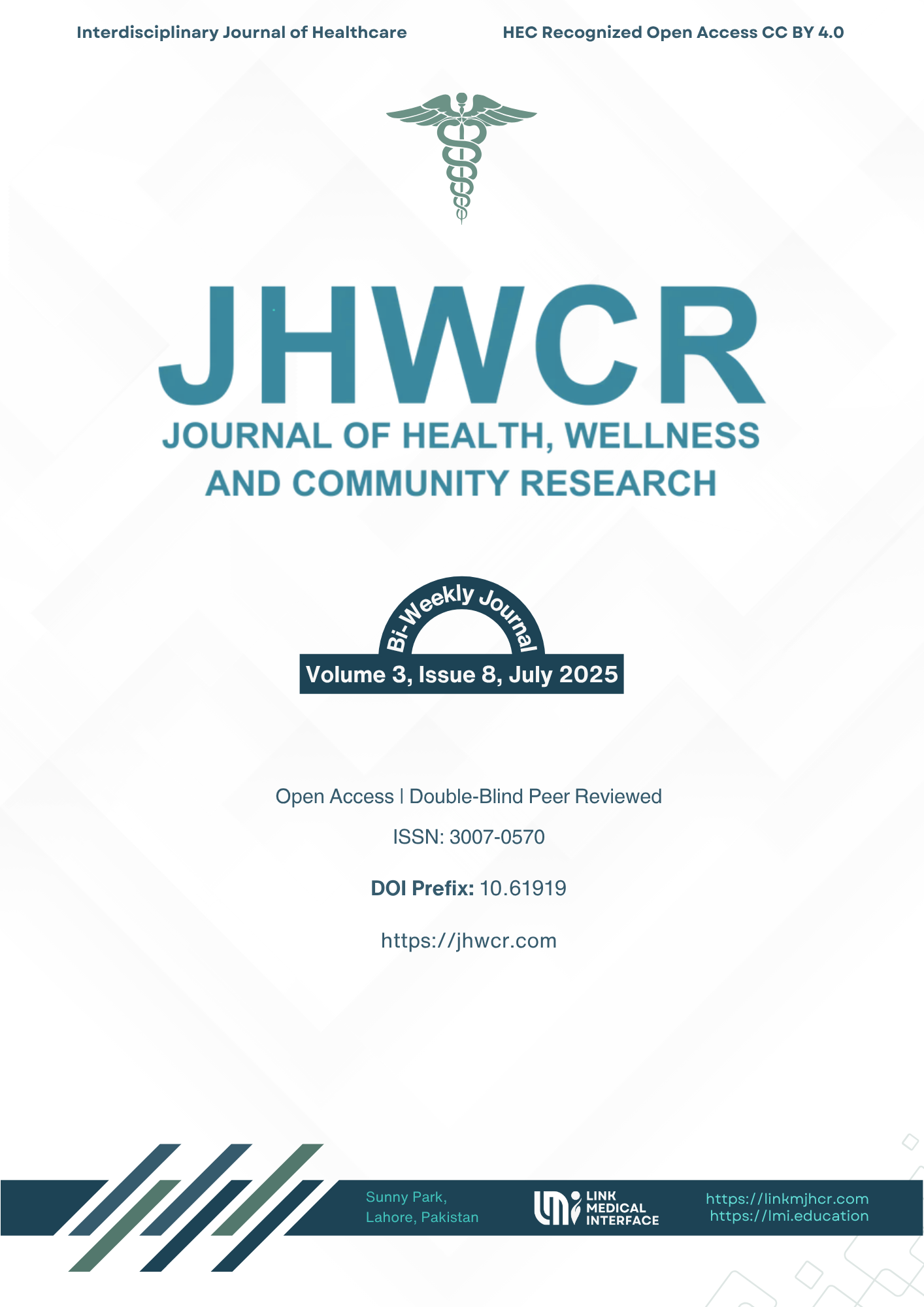Determinants of Contraceptive Service Utilization Among Women of Reproductive Age Visiting Civil Hospital Umerkot
DOI:
https://doi.org/10.61919/d9twhc64Keywords:
contraceptive use, family planning, rural women, socio-cultural barriers, Pakistan, reproductive health, healthcare access.Abstract
Background: Contraceptive use is essential for improving maternal and child health outcomes, particularly in rural populations where access to family planning is constrained by socio-cultural and economic barriers. In Pakistan, the contraceptive prevalence rate remains suboptimal, with rural women disproportionately affected by limited education, gender norms, and poor health infrastructure. Understanding context-specific determinants is critical to addressing unmet family planning needs. Objective: To determine the prevalence of contraceptive use and identify the socio-demographic, cultural, and healthcare-related factors associated with contraceptive service utilization among women of reproductive age attending Civil Hospital Umerkot, Sindh, Pakistan. Methods: A cross-sectional observational study was conducted over six months in 2023 among 356 married women aged 15–49 years attending the hospital’s outpatient department. Data were collected using structured, interviewer-administered questionnaires assessing demographic characteristics, access to healthcare, contraceptive awareness and usage, spousal support, and cultural influences. Descriptive statistics, chi-square tests, and multivariate logistic regression were used to analyze associations. Results: Current contraceptive use was reported by 25.3% of participants. Secondary education (aOR: 2.64), employment (aOR: 1.98), spousal support (aOR: 3.22), awareness of services (aOR: 2.91), and absence of social stigma (aOR: 1.79) were positively associated with use. Barriers such as joint family structure and male child preference significantly reduced likelihood of use. Contraceptive prevalence declined sharply with accumulation of multiple barriers. Conclusion: Contraceptive service utilization in Umerkot is hindered by low education, limited awareness, patriarchal norms, and structural inaccessibility. Interventions must address these interconnected barriers through community education, male involvement, and health system strengthening.
Downloads
Published
Issue
Section
License
Copyright (c) 2025 Rais Muhammad, Muhammad Ilyas Siddiqui, Gulzar Usman, Abdul Razzaque Nohri, Kelash Kumar, Sarvan Kumar (Author)

This work is licensed under a Creative Commons Attribution 4.0 International License.


